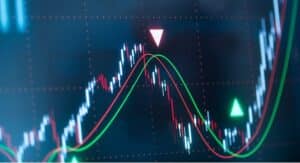In the ever-evolving landscape of forex trading, seasoned traders are constantly on the lookout for advanced tools to enhance their decision-making process. One such powerful indicator that has gained popularity is Kaufman’s Efficiency Ratio (KER). Developed by Perry J. Kaufman, this indicator provides valuable insights into market efficiency, helping traders identify trends and make informed trading decisions. In this in-depth guide, we’ll explore the intricacies of Kaufman’s Efficiency Ratio, including its origins, calculation, interpretation, and practical applications in the dynamic world of forex trading.
Understanding Kaufman’s Efficiency Ratio (KER)
Origins and Development
Perry J. Kaufman introduced the Efficiency Ratio in his book “New Trading Systems and Methods.” The ratio was designed to address the limitations of traditional indicators and provide a more accurate measure of a market’s efficiency. The Efficiency Ratio is a key component of Kaufman’s Adaptive Moving Average (KAMA), but it can also be used as a standalone indicator to assess price movements.
The Logic Behind KER
KER is rooted in the concept of market efficiency, measuring the relative position of price changes within a given time period. The underlying logic is to quantify the ratio of positive price changes to the total price changes over a specified period. By doing so, KER aims to reveal the efficiency of price movements and whether trends are developing or if the market is exhibiting random price fluctuations.
Calculating Kaufman’s Efficiency Ratio
The Efficiency Ratio is calculated using the following steps:
- Calculate the net price change over a specified period.
Net Change = Close – Close (n periods ago)
- Calculate the sum of the absolute values of positive and negative price changes.
Positive Sum = Σ |Net Change| for positive changes
Negative Sum = Σ |Net Change| for negative changes
- Calculate the Efficiency Ratio (ER).
ER = Positive Sum / (Positive Sum + Negative Sum)
- Calculate Kaufman’s Efficiency Ratio (KER).
KER = ER * 100
The resulting KER value ranges from 0 to 100, with higher values indicating a more efficient and trending market.
Interpreting KER Signals
Trend Identification
KER is particularly effective in identifying trends and gauging the strength of price movements. A rising KER suggests a more efficient uptrend, while a falling KER indicates a more efficient downtrend. Traders can use KER to confirm trends and avoid entering positions during periods of low efficiency.
Overbought and Oversold Conditions
Traders can also use KER to identify potential overbought or oversold conditions. Extremely high KER values may indicate an overextended trend, signaling a possible reversal or correction. Conversely, very low KER values may suggest a market that is running out of steam, possibly leading to a trend change.
Divergence and Confirmation
Divergence between KER and price movements can provide valuable signals. If prices are making new highs, but KER fails to confirm, it may indicate weakening momentum, potentially leading to a trend reversal. Conversely, if prices and KER move in harmony, it strengthens the case for the existing trend.
Practical Applications in Forex Trading
Trend Confirmation
KER is a valuable tool for confirming trends identified by other indicators or analytical methods. Traders can use KER in conjunction with trendlines, moving averages, or other trend-following indicators to bolster their confidence in the direction of the market.
Dynamic Risk Management
KER can aid traders in adjusting their risk management strategies based on market efficiency. During highly efficient trends, traders may opt for a more aggressive approach, while during periods of low efficiency, a more conservative stance might be appropriate.
Fine-Tuning Entry and Exit Points
By incorporating KER into their trading strategy, traders can fine-tune entry and exit points. For example, entering a long position when KER is rising and confirming an uptrend can provide a more robust entry signal.
Potential Limitations
While KER offers valuable insights, traders should be aware of potential limitations:
Sensitivity to Period Selection: The efficiency ratio’s performance can be sensitive to the chosen period. Traders may need to experiment with different periods to find the most suitable setting for the specific market conditions.
Not a Standalone Indicator: While powerful, KER is most effective when used in conjunction with other indicators and tools for comprehensive market analysis.
Kaufman’s Efficiency Ratio (KER) stands as a versatile and insightful tool in the toolkit of forex traders. Its ability to measure market efficiency, identify trends, and offer signals for potential reversals makes it a valuable asset for both novice and experienced traders. By understanding the logic behind KER, mastering its calculation, and interpreting its signals effectively, traders can leverage its power to make more informed and strategic decisions in the fast-paced world of forex trading.
As with any technical indicator, it’s essential for traders to integrate KER into a comprehensive trading strategy, combining it with other forms of analysis and risk management techniques. Continuous testing, refinement, and adaptation of strategies will enable traders to unlock the full potential of KER and navigate the complexities of the forex market with confidence.
Let’s Manage Your Forex Funds With Fx Pips Guru!
Fx Pips Guru is a forex fund management company managing client’s funds profitably. We work with prop firms as well to pass the challenges and to manage the funds following consistency and profitability. Let’s do Live Chat with our experts.




